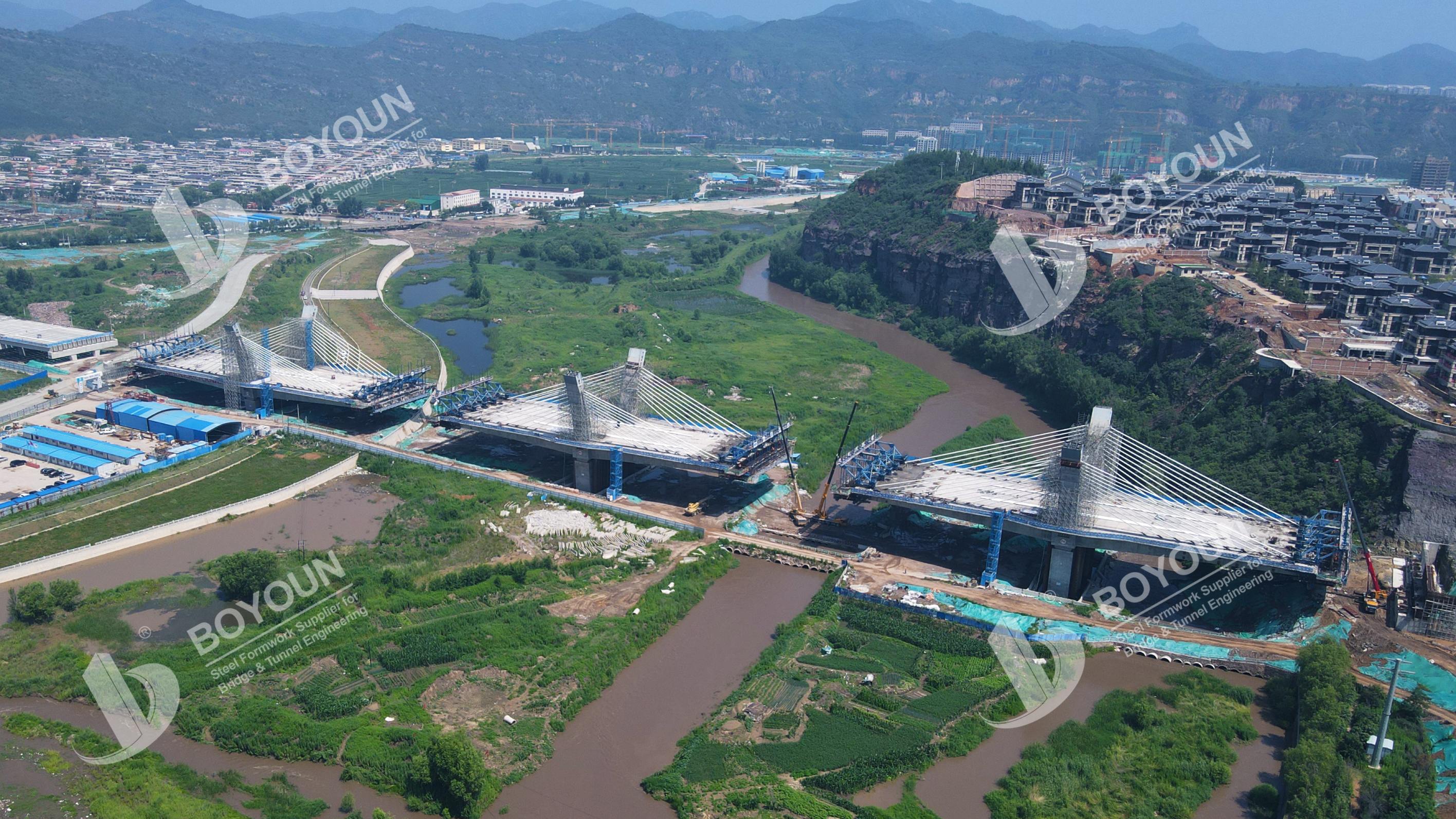The cantilever carriage construction process is a crucial aspect of bridge engineering. In this article, we will explore cantilever carriage construction.
The cantilever carriage construction process in bridge engineering includes two parts: process flow and related requirements.
The process consists of 9 steps:
1. Assembling the horizontal and vertical truss beams, bottom basket formwork, main longitudinal beams, and pivot.
2. Installing the main transverse beams.
3. Installing the front and rear cantilever suspension rods, spreader beams, and jacks.
4. Anchoring the main longitudinal beams, adjusting the position of the transverse beams and longitudinal beams, and suspending the bottom baskets on both sides.
5. Pressure testing to eliminate non-elastic deformation of the baskets and recording elastic deformation data.
6. Adjusting the elevation of the bottom baskets, installing outer templates, and top templates.
7. Adjusting formwork dimensions and elevations.
8. Setting up prestressed pipelines, tying rebars, installing end formwork, and plugs.
9. Pouring operations.

Pay attention to the assembly sequence and assemble the traveling equipment, main longitudinal beams, main transverse beams, anchoring system, bottom basket platform, and tensioning platform in the correct order. Error requirements: Elevation error ≤ 5mm; technical requirements: All components must be symmetrical and elevation should be adjusted at any time.
First, when preparing the construction plan, it must be combined with the technical quality requirements of the design drawings and the actual construction, and design changes should be made early to facilitate technical briefings and pre-job training.
Secondly, after the construction of Pier Top Section pier table is completed , inspected, and qualified, the assembly of the hanging basket can be organized during the form traveler moving and installation process. The materials used for the cantilever form traveler must meet the requirements. To prevent cracks around the anchor points after the cantilever carriage is installed, the force of each anchor rod should be calculated and the unevenness of the force on each anchor rod should be taken into consideration. The reinforcement and steel base plates should be placed in the anchor area. Before moving the forming traveler, the two sets of form travelers in the front and rear should be synchronized to avoid imbalances in weight.
Third, continuous monitoring should be conducted during the pre-stressing process of the cantilever carriage to provide a basis for monitoring formwork. The initial pressure test elevation measurement should be accurate, taking into account uncertainty and meeting the stable pressure time.
Fourth, for reinforcement welding on the structure's surface, it must ensure the same circuit and the correct positioning and direction of the anchor base plate.
Fifth, during the pouring operation, attention should be paid to the pre-embedding of the support member anchor plate and the displacement and change of the beam end bottom mold anchor points. Concrete pouring should be done symmetrically and evenly into the template cavity, and enhanced vibration should be carried out near the prestressed pipeline.
Sixth, during the conversion process of temporary stabilization of the pier, the temporary anchoring force should be gradually reduced slowly, uniformly and symmetrically, to ensure the stable force of the bearing. The release and removal of temporary stabilization should be carried out in a balanced and symmetrical manner to ensure gradual and uniform release.
The application of cantilever carriage technology in the construction of cantilever bridges has improved the construction efficiency and construction quality of civil engineering projects in bridge construction. What are your thoughts on this? Welcome to communicate with us.

International Department: Room 2507-2508, Tower C of Wanda Plaza, Tongzhou District, Beijing 101118, China.
+86-13021287080
info@boyoun.cn